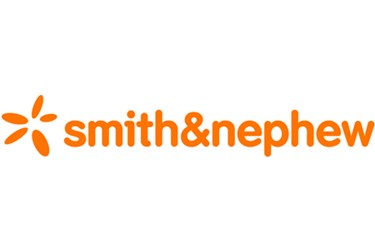Smith & Nephew Integrates Wireless Patient Monitoring Into Wound Care Platform

Smith & Nephew (S&N) has announced a new partnership with Leaf Healthcare, maker of a wireless system that monitors patient movement, to jointly develop an integrated portfolio for patient wound care and prevention. The companies signed an agreement in February for S&N to distribute Leaf’s pressure injury technology, and will give a joint presentation at the Symposium of Advanced Wound Care (SAWC) in San Diego.
Hospital-acquired pressure ulcers (HAPUs), which can develop on the skin of hospitalized patients immobilized by illness, often lead to life-threatening infections and have a significant impact on rising healthcare costs. In a study published in 2015, researchers associated lower incidence of HAPUs with shorter hospital stays, less patient risk, and reduced healthcare cost, and noted that innovative solutions are required in environments short on experienced full-time nursing staff.
Leaf Healthcare’s patient monitoring system consists of wireless sensors placed along the patients’ body that record movements, analyze the data, and issue alerts to clinicians and caregivers if a patient is in danger of developing dangerous HAPUs. In 2016, the system was awarded Frost & Sullivan’s Pressure Ulcer Prevention New Product Innovation Award; F&S dubbed the technology the “gold standard” of patient mobility monitoring.
“The Leaf Patient Monitoring System is the industry’s most advanced tracking system, improving nurse efficiency and compliance with turning protocols and thereby dramatically reducing HAPU occurrences,” said Venkat Rajan, global program director of Visionary Healthcare at Frost & Sullivan.
A recent study of Smith & Nephew’s HAPU prevention protocol, which included the company’s Allevyn Life line of silicone foam dressings, demonstrated a 69 percent reduction in HAPU incidence in an adult intensive care unit. Researchers noted that the study validated the need for collaborative and proactive HAPU prevention programs for hospitals.
“S&N is focused on providing not just products to treat conditions, but also supporting customers through technologies designed to support prevention,” said Glenn Warner, president U.S. of S&N, in a recent press release, commenting that the Leaf system is “highly complementary” with S&N’s existing wound business.
S&N’s partnership with Leaf began in February with an agreement to distribute Leaf’s monitoring system, and Leaf CEO and co-founder Barrett Larson commented that the partnership with S&N will expand adoption of the Leaf monitoring system in the U.S., where it is currently approved for market. Financial details of the partnership were not disclosed.
In an earnings call last year, S&N CEO Olivier Bohoun announced a five-year plan that he said will make the company more globally competitive; it includes prioritizing high-growth businesses and emerging markets. The company recently globalized its R&D program, setting up a state-of-the-art research hub in the U.K. that currently is focused on developing wound dressings. Despite slowdowns in other divisions, S&N’s advanced wound care business rose by more than 2 percent in 2016.
According to a recent report by Markets and Markets, the global wound care market – with an emphasis on advanced wound care — is expected to be worth over $20.4 billion by 2021, driven by the increasing prevalence of chronic disease in emerging markets, particularly diabetes.
